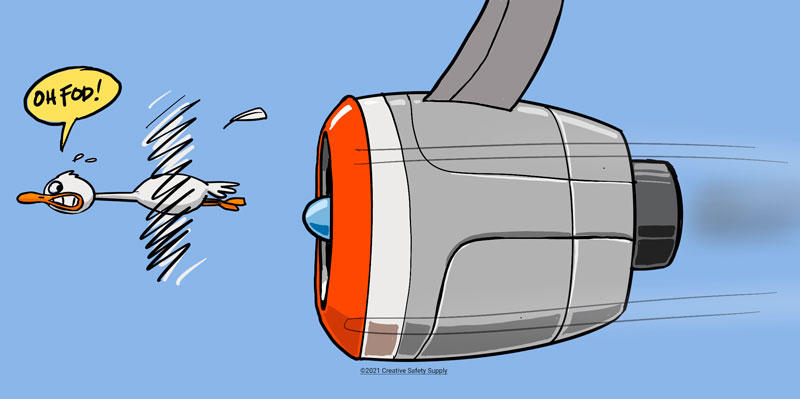
FOD stands for foreign object debris and foreign object damage. The term is most commonly used in the aviation or aerospace industry and refers to anything alien to an aircraft or system that could cause damage. However, FOD can also pose issues to a number of manufacturing sectors where foreign damage has the potential to compromise safety, quality, or compliance.
Foreign Object Debris
Simply speaking, any object, article, substance, or agent that is not where it’s supposed to be is considered to be foreign object debris. In the aviation industry, FOD is anything that can make its way into an engine or aircraft—from metal shavings and misplace tools to wildlife. In a manufacturing environment or cleanroom, FOD is anything introduced to the space that could cause injuries or undermine quality standards.

Foreign Object Damage
This is whatever damage (quality, cost, or functionality) incurred as a result of foreign object debris. Having FOD in the wrong place at the wrong time can be disastrous. One of the most notable incidents of FOD was the 2009 crash of US Airways flight 1549 into the Hudson River. In this example, the geese were foreign objects causing the engines to lose power.
Preventing FOD
Designating FOD prevention areas is critical to avoiding foreign object damage. The three commonly used levels are:
- FOD Awareness Area: Manufacturing or production areas without the potential of foreign debris entrapment.
- FOD Control Area: Areas of operation with the potential of debris causing damage.
- FOD Critical Area: Areas, such as cleanrooms, that require the highest level of preventative measures.
Make sure employees understand where these different destinations are and what precautions must be taken. Outline FOD areas with floor marking tape and be sure to post safety signs reminding workers to be aware of foreign object damage or foreign object debris, and its risks.
Similar Questions
- What is FOD?
- What is a cleanroom?
- What does CCP stand for?
- How are accidents at the workplace prevented?
- How can floor markings improve safety?
- What does HACCP stand for?
- What does JSA stand for?
- What are the best Prevention Strategies for Human Error?
- What does RFI stand for?


